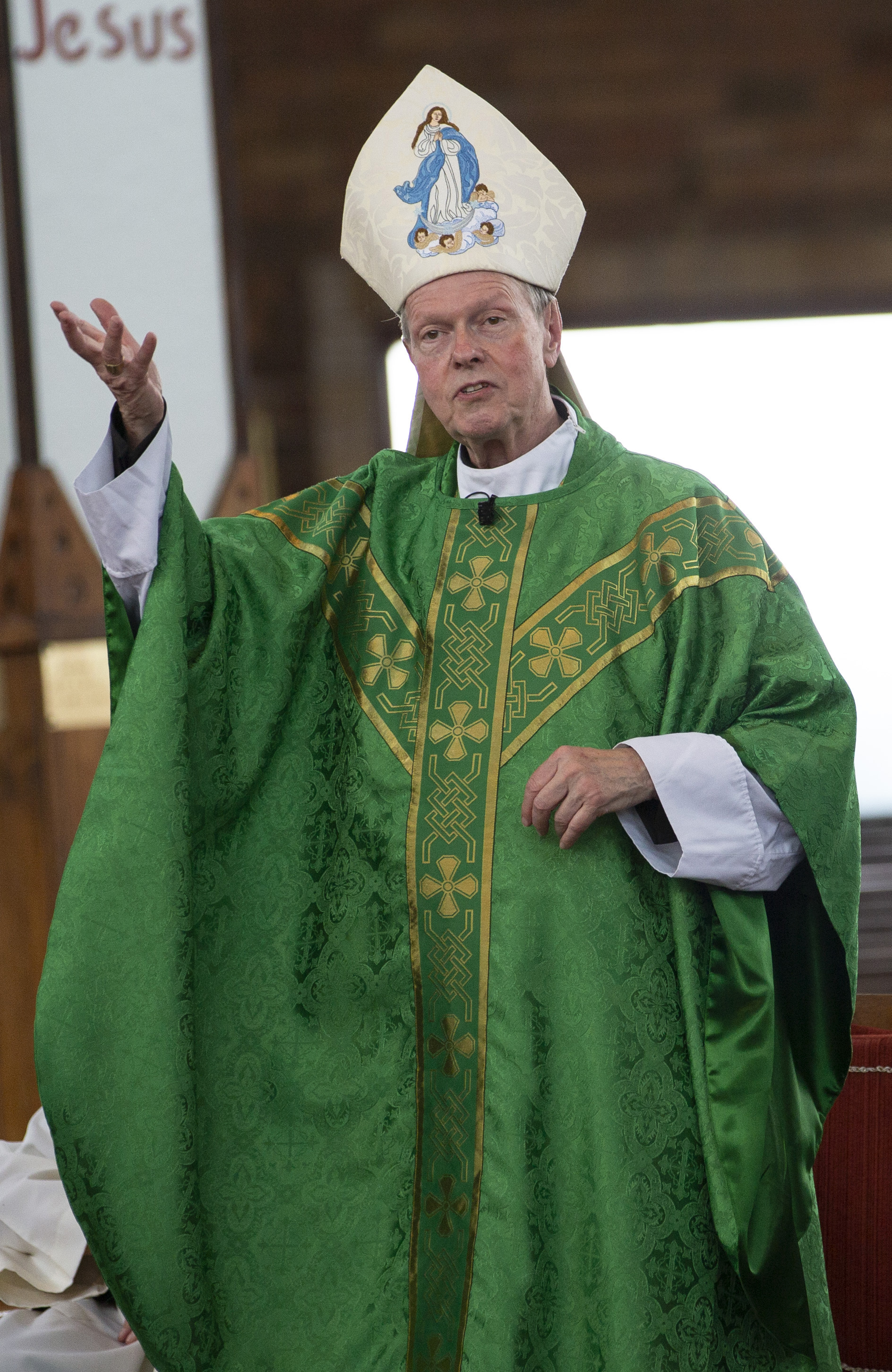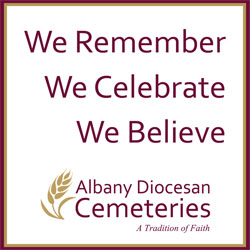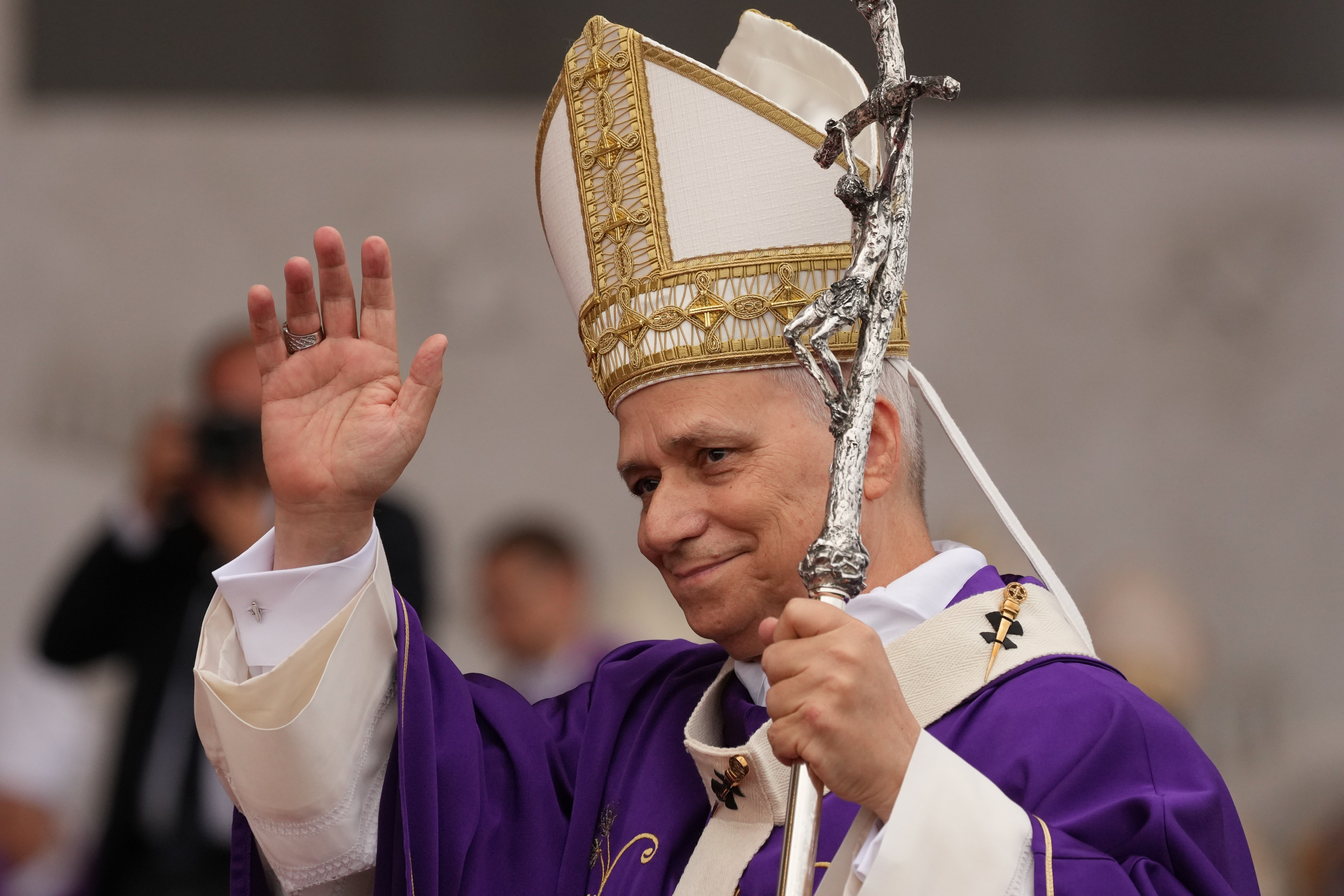April 14, 2021 at 12:38 p.m.
I have worked in Catholic cemetery ministry for 38 years. People sometimes ask, “Isn’t it morbid to work in a cemetery?” No, I’ve never found it to be morbid, because as Christians we know that at death, life is changed, not ended. Catholic cemeteries exist because of our belief in the resurrection of the body, in some new shape or form, at the end of time. If there were no promise of resurrection and eternal life, there would be no need for Catholic cemeteries.
The Church considers two places sacred: churches and cemeteries. The Catholic cemetery is sacred not only because of a blessing or consecration, but by the sacred function that it performs on behalf of the entire Catholic community: It holds the bodies, once temples of the Holy Spirit, until the Lord comes again in glory. We know that cemeteries are sacred spaces, we can feel it as we enter the gates. We know we are standing on sacred ground. The cemetery is where we come to grieve, to remember and to pray.
Catholic cemeteries are symbols of the extended community of believers, a community unbroken by death. We can feel that, too. Luke 16:19-31 tells the story of the rich man and the poor man, Lazarus. Bishop Robert Barron’s reflection on this Gospel tells us that the story has an important practical consequence: we are still related to those who have gone before us. They are, in a very real sense, gone, but they have not disappeared. They are connected to God. They are not so much somewhere else, as somehow else, and thus, they can relate to us in very intimate ways. A Catholic cemetery serves the Church by spanning the kingdom now present and the kingdom yet to come.
I think it is particularly fitting that we have cemeteries named for St. Joseph. There are at least a half dozen St. Joseph’s Cemeteries in the Diocese of Albany. One is St. Joseph’s Cemetery in Waterford, the cemetery for the French Parish of St. Joseph in Cohoes. For 130 years, St. Joseph’s Cemetery has held the beloved dead of Cohoes who await the second coming. The parish was merged in 2009, but the cemetery will stand as a memorial to that faith community forever. I visited St. Joseph’s Cemetery recently. There are ornate monuments for the wealthy, but modest memorials for most. You can tell by the Grand Army of the Republic memorials that Cohoes sent her fair share of men to fight in the Civil War. The central feature is a raised round marble altar platform, surrounded by a crucifix and statues of Mary and Joseph. This is where outdoor Masses were held on Memorial Day and maybe other holy days. The area around the altar is large and open, and I can imagine hundreds of people gathered for those outdoor Masses.
As I said, I think it is fitting for a cemetery to be named St. Joseph’s for two reasons. The first is that St. Joseph is known as the patron of the dying and as the patron of a happy death. Tradition holds that St. Joseph died in the arms of Jesus and Mary. There are many versions of a prayer to St. Joseph for a happy death, but this is a favorite of mine: O holy St. Joseph, who died in the arms of the Son of God and in the presence of his holy Mother, I beseech you at my last hour, to stand by me that I may repent of my sins, and breathe my last breath in an act of perfect love and confidence in my Savior. May I repeat his blessed Name, exalted above every name, and proclaim joyfully “Lord, into your hands, I commend my spirit.” Amen.
The second reason it is appropriate to dedicate a cemetery to St. Joseph is his title: St. Joseph the Worker. Saint Joseph, carpenter and foster father of Jesus, is an example of the holiness of human labor. Today, even with lawnmowers and backhoes, men and women who work to maintain cemeteries, to make burials, and to install memorials, perform hard physical labor. They do it day after day, in all kinds of weather, under the patronage of St. Joseph. The burial of the dead has always been recognized as a religious rite and a corporal work of mercy. For those of us who work in cemeteries, it is a ministry, not a business. So, this year we honor St. Joseph as the guardian and protector of the Church, as the patron of the dying and the patron of human labor. We can take his virtuous life as our model for fulfilling our own personal calling to holiness.
Rick Touchette is executive director of Cemeteries at Albany Diocesan Cemeteries.
- Avatar: Fire and Ash
- Washington Roundup: Trump suspends green card lottery; health care subsidies set to expire
- Catholic actor finds Christmas joy in helping US charity
- Trending: A (young) revival in the faith?
- Upcoming symposium gives nod to St. John Paul II’s ‘Letter to Women’
- Experts offer strategies for connection during Christmas amid US ‘epidemic’ of loneliness
- A new rider at the helm: Bishop Richard Moth named archbishop of Westminster
- Cardinal Pizzaballa visits Gaza City’s Holy Family Parish before Christmas
- Daughter of Jimmy Lai: Don’t let my father become a martyr for truth and for freedom
- Pope Leo appoints Queens pastor as Palm Beach bishop, and Vietnam-born priest as auxiliary in Phoenix








Comments:
You must login to comment.